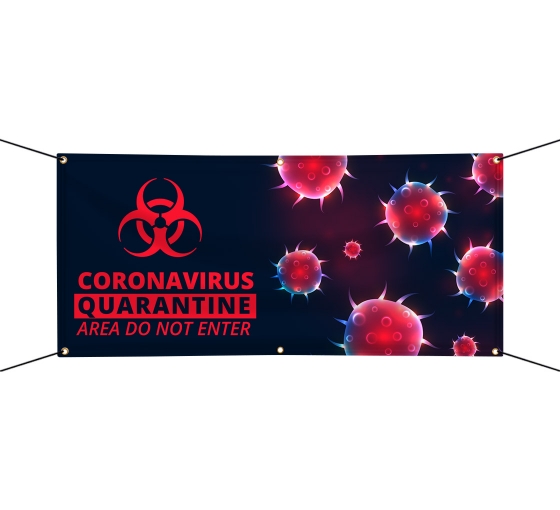Adding full-color graphics and photos to advertising banners will give your banner designs more impact and a much more high-quality appearance. Putting a full-color photograph on your vinyl banner is usually the easiest and best way to do this. Photo banners can give you the exact design you want for your banner design.
Selecting the right pixel images for high-resolution quality
When you want to add a photo or illustration to a banner design, try to keep a few things in mind. For the image to look crisp and clear it really should be saved in the correct resolution. For most large display projects such as popup displays, vinyl banners, window graphics and graphic backdrops, a resolution of about 100 ppi (pixels per inch) at full size is sufficient.
In other words, if you have an image that is 8" x 10" with a resolution of 300 ppi - a standard resolution used for offset printing - then this image can be blown up to about 24" x 30". That will give you a finished resolution of 100 ppi. In many cases, you can often go as low as 50 ppi and still be quite satisfied with the output, because these displays are usually designed for viewing from a distance of 10 feet or more away.
Using Photoshop to create a brilliant color combination
Second, it is often necessary to brighten up the colors of your graphics. You can usually do this by increasing the contrast. In Photoshop, the most effective way to do this is by "pinching" the levels. Open the levels control window and pull the control for the shadows towards the middle (to the right). Then pull the control for the highlights to the left. This has the effect of brightening your light colors and darkening your shadows while eliminating some of the "muddiness" of the mid-tones.
"Sharpening" your images will also have a brightening effect. Punch up your images with a bit of sharpening and they will almost always appear crisper with greater impact. But don't sharpen them too much.
UV printing - Extra protection from outdoor elements
Finally, it is best to work in CMYK mode rather than RGB. Vinyl graphics and other large format graphics are almost always printed on CMYK printers using UV solvent inks. Rather than counting on the printing device to make the conversion (RGB is the default color system used on the computer) convert the images yourself so you know what you are going to get. RGB can often be somewhat misleading since it can display more colors than can be printed by CMYK.
Another important point to be aware of is that the choice of ink will impact the quality of the job. Outdoor projects should be printed with UV solvent inks because they are ideal for full-color printing intended for use in direct sunlight or other potentially harmful weather conditions such as rain or snow.
Unlike water-based inks, solvent inks resist fading due to heavy UV exposure and stand up to wind and rain much better. Non solvent inks will fade much more quickly in bright sunlight. Even for indoor projects, it is often better to use solvent-based inks because they produce a much more durable finished product.



















